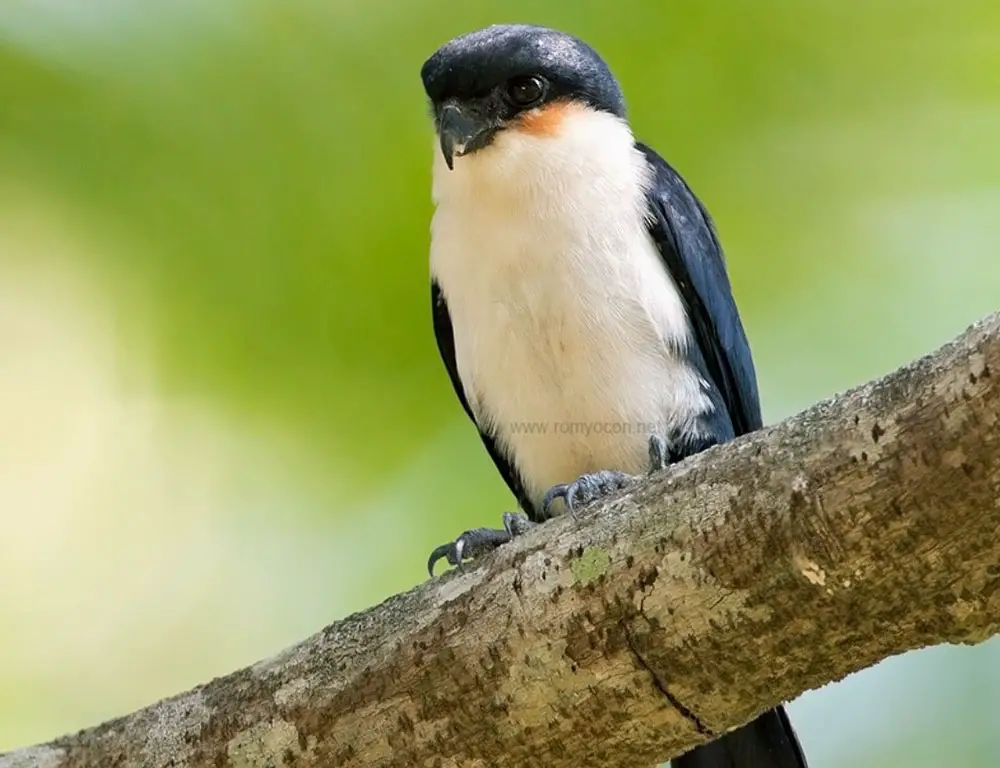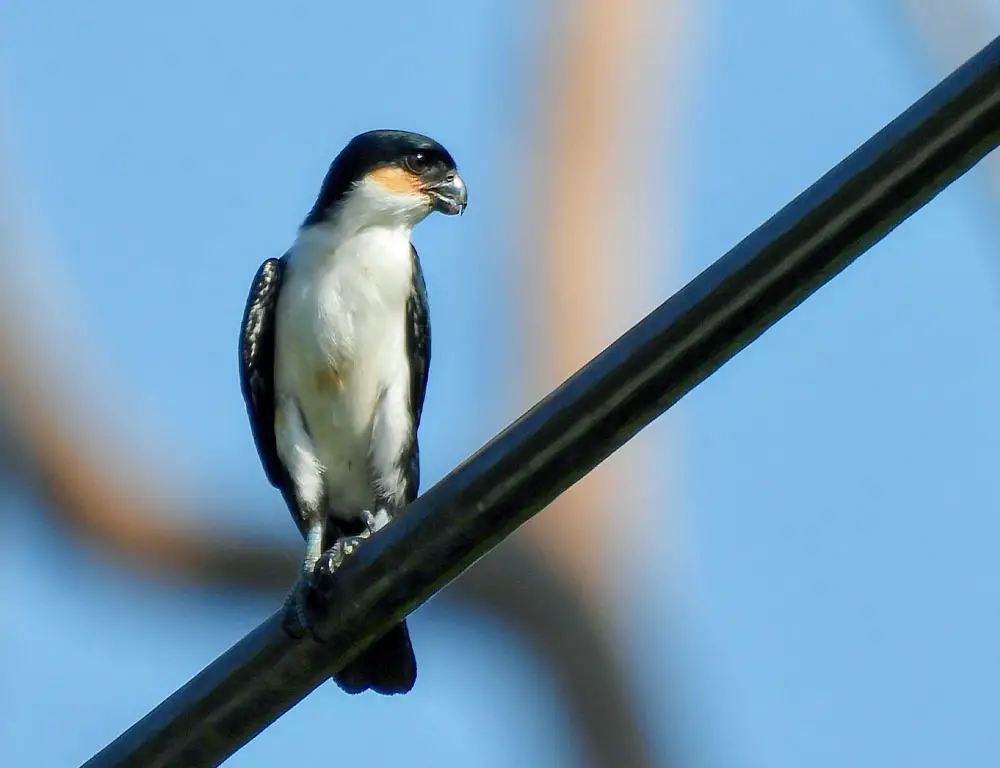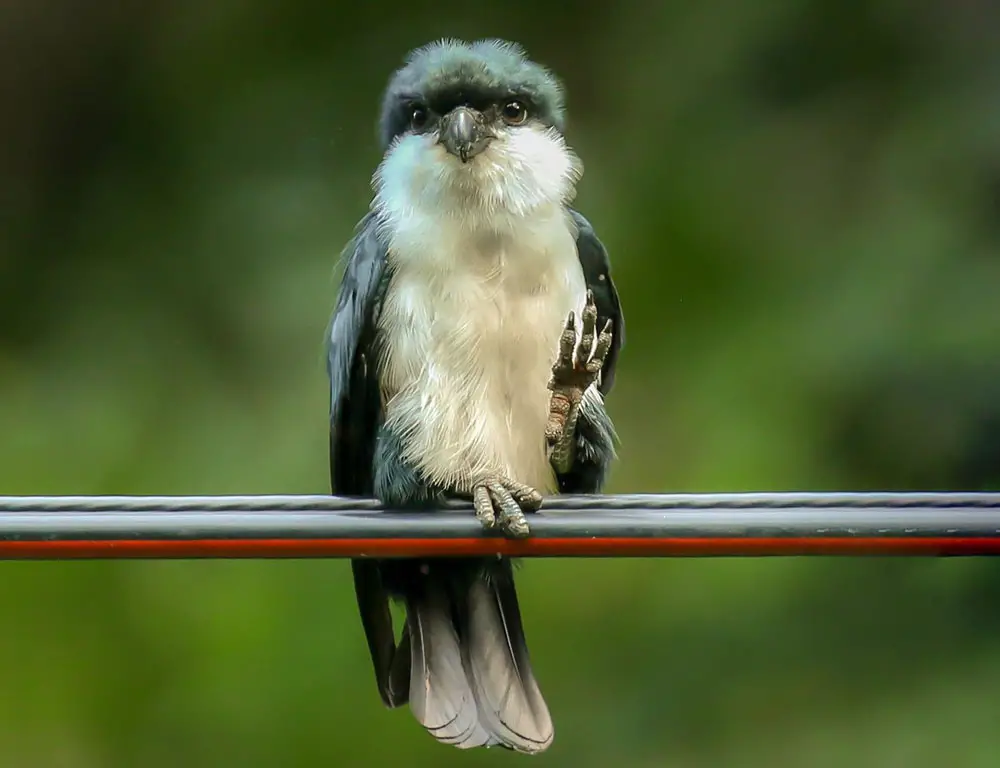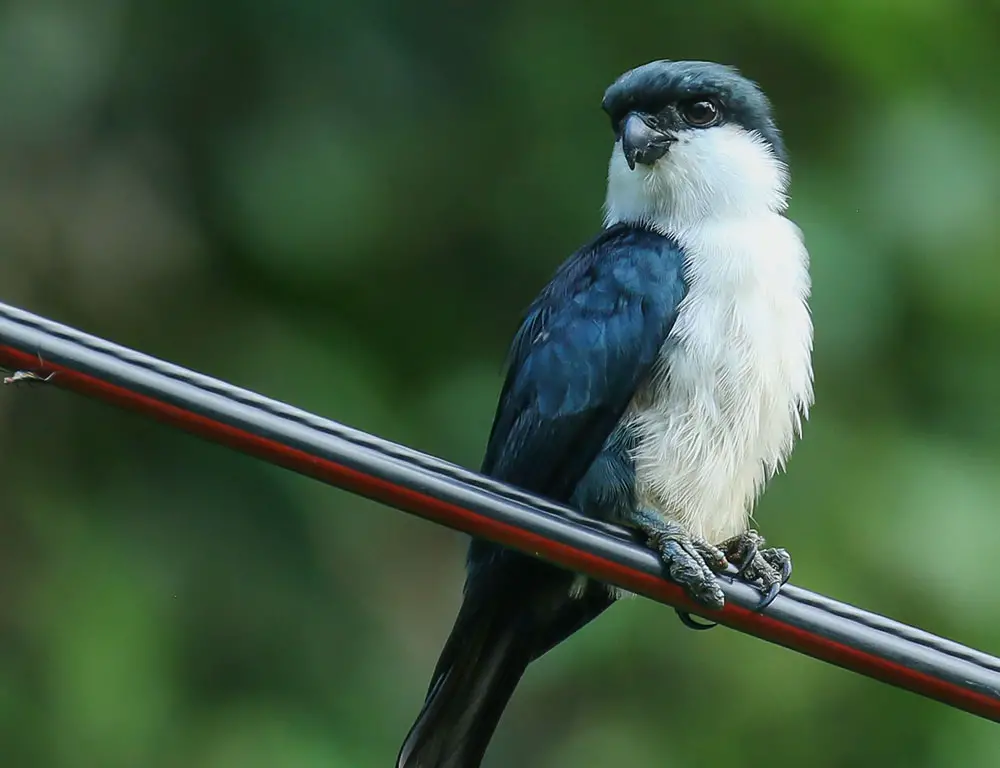In the rich tapestry of bird species worldwide, the Philippine Falconet shines as a captivating subject, particularly close to home in the Philippines.
Despite its diminutive stature, this miniature predator boasts remarkable characteristics that set it apart in the avian world.
It may be mistaken for a common sparrow with a length of merely six to eight inches, yet its prowess as a hunter is formidable. Swift in flight and possessing acute vision, it adeptly captures insects and small prey.
Distinguished by its dark brown plumage with white undersides, the Philippine Falconet thrives in tropical forest habitats, playing a crucial role as an indicator species.
As we unravel its life and behavior intricacies, we unveil nature’s delicate equilibrium, fostering admiration for this unique raptor’s place in our ecosystem.

Physical Characteristics of the Philippine Falconet
The Philippine Falconet (Microhierax erythrogenys) possesses several distinctive physical characteristics that make it a fascinating bird species. Here’s a detailed overview:
Size
The Philippine Falconet is one of the smallest birds of prey globally. It typically measures 6 to 8 inches (15 to 20 centimeters) in height.
Wingspan
Despite its small size, the Philippine Falconet boasts a wingspan ranging from 10 to 12 inches (25 to 30 centimeters), allowing it to maneuver swiftly through its forest habitat.
Coloration
- Plumage: The upper parts of the Philippine Falconet’s body, including its back and wings, are predominantly glossy black, giving it a sleek appearance. This dark coloration helps it blend into the shadows of the forest canopy.
- Undersides: In contrast to its dark upperparts, the undersides of the Philippine Falconet feature striking white patches or spots. When viewed from below, these white markings serve as camouflage against the bright sky.
- Facial Markings: One of the most distinctive features of the Philippine Falconet is the red patch of skin surrounding its eyes. This red orbital skin adds color to its otherwise dark plumage and helps distinguish it from other bird species.
Eyes
The eyes of the Philippine Falconet are noteworthy for their vivid yellow coloration. This color contrast against the bird’s dark facial markings adds to its visual appeal and may play a role in communication or species recognition.
Overall Appearance
Despite its diminutive size, the Philippine Falconet possesses a compact and streamlined body shape, well-suited for swift and agile flight.
Its small size, combined with its dark and white plumage, allows it to move discreetly through the dense foliage of its forest habitat while hunting for prey.
Habitat and Distribution of the Philippine Falconet

The habitat and distribution of the Philippine Falconet (Microhierax erythrogenys) play crucial roles in understanding its ecology and conservation status. Here’s an overview:
Habitat
The Philippine Falconet is primarily found in forests, including primary and secondary growth. It shows adaptability to various forest types, such as lowland rainforests, montane forests, and mossy forests.
These birds favor habitats with tall trees and dense foliage, providing them with suitable perching sites and cover for hunting.
Specific habitat preferences include:
- Primary and Secondary Forests: Philippine Falconets inhabit both undisturbed primary forests and regenerating secondary forests.
- Tall Trees with Dense Foliage: often perch on high vantage points within the canopy, allowing them to observe and ambush prey below.
- Islands and Mainland: While they primarily inhabit mainland areas, they can also be found on various islands across the Philippine archipelago.
Distribution
The Philippine Falconet is endemic to the Philippines and is found nowhere else. Its distribution spans multiple islands within the archipelago, including Luzon, Mindanao, Samar, and Leyte.
These birds are known to occur in the Philippines’ northern and southern regions, indicating a wide geographical range within the country.
Key points about their distribution include:
- Mainland and Islands: Philippine Falconets are distributed across mainland areas and various islands within the Philippines.
- Geographical Range: They have been recorded in different regions of the Philippines, from the northernmost to the southernmost parts of the archipelago.
- Altitudinal Range: While they are primarily found at lower altitudes, ranging from sea level to 1,500 meters above sea level, sightings at higher elevations indicate some altitudinal flexibility.
Diet and Feeding Habits of the Philippine Falconet

The diet and feeding habits of the Philippine Falconet (Microhierax erythrogenys) are fascinating aspects of its ecology, reflecting its role as a predator in its forest habitat. Here’s an overview:
Diet
The Philippine Falconet is primarily carnivorous, feeding on various prey items. While insects form the bulk of its diet, these birds are also known to prey on small vertebrates opportunistically. Everyday prey items include:
- Insects: Philippine Falconets feed on a diverse range of insects, including beetles, butterflies, grasshoppers, dragonflies, and other flying or crawling insects. Their agile flight and sharp vision enable them to hunt these small and often elusive prey in the forest canopy.
- Small Reptiles: Besides insects, Philippine Falconets may prey on small reptiles such as geckos and anoles. These arboreal reptiles are abundant in forest habitats and provide another potential food source for the falconets.
- Small Birds: While less common, Philippine Falconets have been observed preying on small birds, including fledglings or individuals of smaller bird species. Their swift flight and predatory skills allow them to capture or surprise birds while perched in mid-air.
- Occasional Prey: On rare occasions, Philippine Falconets may also target other small vertebrates such as rodents or bats. These instances likely occur opportunistically when the opportunity presents itself.
Feeding Habits
Philippine Falconets employ several hunting techniques and feeding behaviors to capture their prey efficiently. These include:
- Sit-and-Wait Strategy: Falconets often perch motionless on high vantage points within the forest canopy, patiently scanning their surroundings for potential prey. This sit-and-wait strategy allows them to conserve energy while waiting for suitable prey to come within striking distance.
- Aerial Pursuit: When prey is spotted, Philippine Falconets are capable of swift and agile flight, allowing them to pursue insects or small birds through the forest canopy. They use their sharp talons to capture prey in mid-air with precision.
- Ambush Predation: In addition to aerial pursuit, falconets may also employ ambush tactics, waiting for unsuspecting prey to pass before launching a surprise attack. Their dark plumage and stealthy behavior help them remain concealed until the opportune moment.
- Cooperative Hunting: On rare occasions, Philippine Falconets may engage in cooperative hunting, where multiple individuals work together to capture prey. This may involve one bird acting as a decoy to distract the prey while another makes the actual kill.
Conservation Status of the Philippine Falconet

The conservation status of the Philippine Falconet (Microhierax erythrogenys) is of paramount importance given its unique status as one of the smallest birds of prey in the world and its restricted range within the Philippines.
Here’s an overview of its conservation status:
IUCN Red List Status
As of the most recent assessment, the International Union for Conservation of Nature (IUCN) categorizes the Philippine Falconet as a species of “Least Concern” (LC). This classification indicates that the species is not currently facing imminent threats of extinction.
Population Trend
The population trend of the Philippine Falconet is believed to be stable. However, due to limited data availability and ongoing habitat loss and degradation, it is crucial to monitor population trends closely to detect any significant changes in the future.
Threats
Despite its current status, the Philippine Falconet faces several threats to its long-term survival, including:
- Habitat Loss and Degradation: Deforestation, primarily driven by agricultural expansion, logging, and urbanization, poses a significant threat to the Philippine Falconet’s forest habitat. Loss of primary and secondary forests reduces available foraging and nesting sites, leading to population declines.
- Fragmentation: Habitat fragmentation, resulting from deforestation and land conversion, isolates populations of Philippine Falconets, leading to reduced genetic diversity and increased vulnerability to environmental stochasticity and other threats.
- Climate Change: Climate change can indirectly impact Philippine Falconets by altering forest ecosystems, affecting prey availability, and increasing the frequency and intensity of extreme weather events.
- Illegal Trade and Collection: While not a significant threat currently, illicit trade and collection for the pet trade or traditional medicine could pose risks to Philippine Falconet populations if not adequately regulated.
Conservation Efforts
Efforts to conserve the Philippine Falconet and its habitat include:
- Protected Areas: Establishment and management of protected areas and conservation reserves are critical for safeguarding the Philippine Falconet’s remaining habitat and providing sanctuary for populations.
- Habitat Restoration: Restoration of degraded habitats through reforestation, afforestation, and habitat rehabilitation efforts can help increase available habitat for Philippine Falconets and other wildlife.
- Research and Monitoring: Continued research on the ecology, behavior, and population dynamics of Philippine Falconets is essential for informing conservation strategies and monitoring population trends over time.
- Community Engagement and Awareness: Engaging local communities in conservation initiatives, raising awareness about the importance of biodiversity conservation, and promoting sustainable land-use practices can help garner support for protecting Philippine Falconets and their habitats.
- Legislation and Enforcement: Enacting and enforcing laws and regulations to protect Philippine Falconets from habitat destruction, illegal trade, and other threats is crucial for their conservation.
Conclusion
The Philippine Falconet emerges as a captivating subject, revealing unique characteristics and adaptive behaviors. Its petite size, distinct black-and-white plumage, and diverse habitat preferences distinguish it from the avian world.
However, despite its resilience, the falconet faces imminent threats, notably habitat loss due to deforestation. Urgent conservation measures are imperative to safeguard these tiny raptors and preserve their crucial role in the ecosystem.
As ambassadors of biodiversity, Philippine Falconets underscore the importance of ongoing research and dedicated conservation efforts.
By delving deeper into their lives and advocating for their protection, we uphold their significance within the intricate web of life, ensuring their survival for future generations to marvel at and cherish.